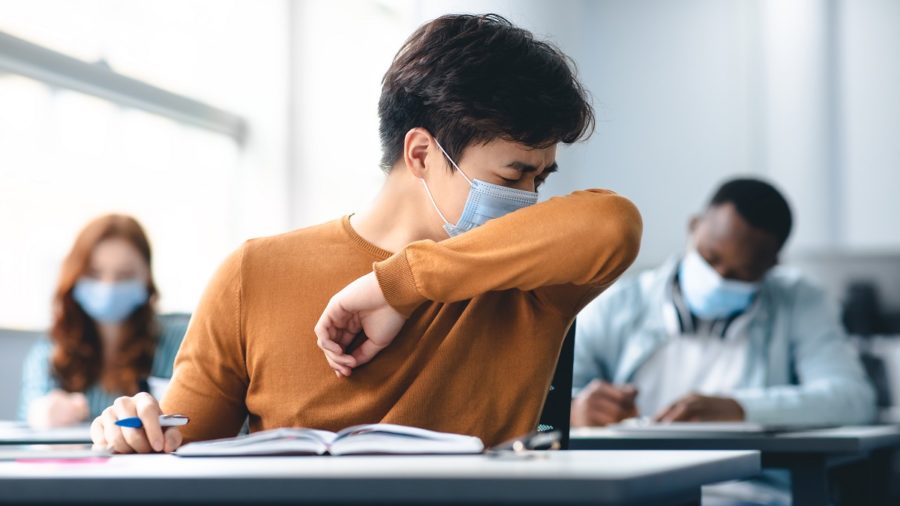Stepping into High School During a Pandemic
The world wants to move on from COVID-19, and people are longing for a time when social distancing and wearing masks are not looming concerns. The reopening of full-day schools was a start in that direction. With many students coming back to a “normal” school year, they are adjusting to longer school days, wearing a mask for multiple hours straight, and getting used to not having the luxury of eating food during class. As it goes, the 2020-2021 school year had a significant impact on many students, specifically for the freshman class, whose COVID-19 experience jeopardized their final year of middle school and disturbed what would have been a smooth transition into an important, new stage of life.
Two years ago in the year of 2020, former seventh graders switched to online learning due to the pandemic, but they were not ready for the ramifications of that medium. Such feelings can mainly be attributed to the virtual learning environment that was created to socially distance learners. For example, one freshman explained, “I was having trouble staying focused and keeping my grades up during the virtual learning… after [COVID-19] hit [I] talked to nobody, unless my parents made me.” Without being in a classroom, this student felt much more compelled to open other tabs during their Zoom calls or get distracted by a family member walking into their room. Focusing on their teacher became a hefty challenge which became apparent in their grades. Furthermore, seeing peers was not natural, as talking to friends over a phone never felt the same as conversing with them in the same room. These detriments, both academically and socially, put many students behind and forced the grade as a whole to adapt very quickly. One student said that virtual learning caused them to “eventually become more awkward when met with in-person situations.” Without talking to peers, interacting with teachers, and spending hours everyday surrounded by other kids, many students were left in a very vulnerable state.
When Governor Phil Murphy signed an executive order to reopen schools, the student was “excited about meeting new people and teachers and interacting with them.” The prospect of filling the void COVID-19 left in many students’ lives was a thrilling, yet scary thought. Some students were nervous to go back, mainly because of having to socialize with peers again. Small interactions at lunchtime or raising your hand in class were suddenly new norms for previous virtual learners, and adjusting seemed very daunting. Another student “felt socially unprepared” for the interactions posed in in-person learning.
When the start of the new school year finally came, every student across New Jersey once again roamed their school hallways after more than a year. This dramatic shift in routine from middle to high school “has been strange,” another student felt, “especially considering how high school is much more stressful.” Many freshmen can attest that the first week of school was a major shift from what they have been used to for the past year. Morris Hills counselor Caryn Graf agrees; she said that “It was overwhelming for… a lot of our students to come in and go all the way until three o’clock in the school day, and come [to Morris Hills] every single day.” Although the transition for freshmen has been very abrupt and rough, now many students have now gotten conditioned to their new lifestyle and environment. By the end of the first quarter, most students were freely conversing with their peers and overall enjoying all that high school has to offer.
Still, the ramifications of virtual learning will not go unnoticed by the freshman class, whether for better or for worse. While one student thought they learned to become more “patient” under these circumstances, another realized that “procrastination [became] a serious issue in [their] everyday life”. By molding and shaping many people into the state they are in to this day, the pandemic has had a profound impact on each and every individual.


